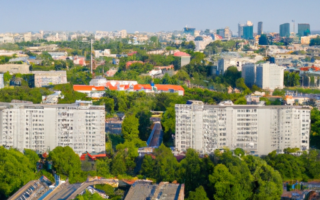Headlines:
Headlines play a crucial role in grabbing the attention of readers and enticing them to click and read the full article. They serve as a preview of the content, giving readers a quick glimpse into what they can expect from the article. Crafting effective headlines is essential for any writer or marketer aiming to maximize their reach and engage readers.
When it comes to creating headlines, it’s important to consider both the content and the context. The headline should accurately reflect the main idea or key takeaway of the article, while also incorporating keywords that are relevant to the topic. Including these keywords helps optimize the headline for search engine algorithms, increasing the chances of the article ranking higher in search results.
Additionally, headlines should be concise and attention-grabbing. In a world where people are bombarded with information, it’s crucial to capture their attention within seconds. To achieve this, headlines can make use of strong and compelling words, evoke curiosity, or promise a solution to a specific problem.
Adding numbers and statistics to headlines can also increase their clickability. People are often drawn to headlines that promise a specific number of tips, facts, or ways to achieve something. Numbers can provide a clear idea of what readers can expect from the article and make it more enticing to click.
It’s important to note that headline optimization is an ongoing process. Monitoring the performance of different headlines can help identify which ones resonate the most with readers. Analyzing metrics such as click-through rates and time spent on the page can provide valuable insights that can be used to refine future headlines.
In conclusion, headlines are a powerful tool in capturing readers’ attention and driving traffic to articles. By optimizing headlines with relevant keywords, being concise and attention-grabbing, and incorporating numbers or statistics where appropriate, writers and marketers can increase the likelihood of their articles being noticed and read by a wider audience.
The Importance of Environmental Conservation: Preserving Our Planet for Future Generations
The Importance of Environmental Conservation: Preserving Our Planet for Future Generations
Environmental conservation plays a crucial role in preserving our planet for future generations. With the increasing pressures of climate change, biodiversity loss, and pollution, it has become imperative for individuals, communities, and governments to prioritize the protection and sustainable management of our natural resources.
One of the key reasons why environmental conservation is important is to maintain the delicate balance of our ecosystems. Ecosystems are intricate webs of interactions between plants, animals, and their environment, and any disruption can have far-reaching consequences. By preserving habitats and protecting endangered species, we can safeguard the biodiversity that sustains life on Earth.
Another compelling reason for environmental conservation is to mitigate the effects of climate change. Our planet is experiencing unprecedented warming due to greenhouse gas emissions, primarily from human activities such as burning fossil fuels and deforestation. By conserving forests and promoting renewable energy sources, we can reduce carbon emissions and mitigate the impacts of climate change, such as rising sea levels, extreme weather events, and disruptions in food production.
Preserving the environment also has direct benefits for human health and well-being. Clean air, clean water, and access to green spaces contribute to physical and mental well-being. Conservation efforts that improve air and water quality, promote sustainable agriculture, and protect natural landscapes can enhance the quality of life for present and future generations.
Furthermore, environmental conservation is closely tied to sustainable development. By adopting sustainable practices, such as responsible resource management, renewable energy adoption, and waste reduction, we can ensure that our needs are met without compromising the ability of future generations to meet their own needs. Sustainable development strives for a balance between economic growth, social equity, and environmental stewardship.
In conclusion, environmental conservation is of utmost importance in preserving our planet for future generations. It not only protects biodiversity and mitigates climate change but also promotes human health and well-being and fosters sustainable development. As individuals, it is crucial that we take actions in our daily lives to support environmental conservation efforts, and as a global community, we must work together to ensure a sustainable future for all.
Exploring Sustainable Solutions: Innovations and Practices in Environmental Preservation
In recent years, the urgent need for environmental preservation has become increasingly apparent. With the growing concerns about climate change, deforestation, and pollution, people are searching for innovative and sustainable solutions to mitigate the damage and protect our planet for future generations.
Exploring sustainable solutions in environmental preservation is crucial for combating these pressing issues. Innovations and practices that focus on reducing carbon emissions, conserving energy and resources, and promoting a circular economy are gaining momentum worldwide.
One such solution is the development and implementation of renewable energy sources. Solar and wind power have already proven to be viable alternatives to fossil fuels, providing clean and sustainable energy. As technology advances, these sources are becoming more accessible and cost-effective, allowing more individuals and communities to adopt them.
Another important aspect of sustainable solutions in environmental preservation is the promotion of eco-friendly practices in agriculture. Traditional farming methods often involve the massive use of chemical fertilizers and pesticides, which contribute to soil degradation and water pollution. However, sustainable agriculture promotes organic farming techniques, crop rotation, and the use of natural fertilizers, reducing the negative impact on the environment.
Furthermore, sustainable urban planning and architecture play a crucial role in environmental preservation. Designing cities that prioritize walkability, public transportation, and green spaces can reduce carbon emissions and improve air quality. Additionally, constructing buildings with energy-efficient materials and incorporating renewable energy systems can significantly decrease the carbon footprint of urban areas.
Adopting a circular economy approach is another essential innovation in environmental preservation. Rather than the traditional „take-make-waste” model, a circular economy aims to minimize waste, promote recycling, and reuse materials. By closing the loop and reducing the reliance on limited resources, a circular economy minimizes the environmental impact and fosters sustainable development.
The exploration of sustainable solutions in environmental preservation requires collaboration between governments, businesses, and individuals. Policies supporting clean energy, sustainable agriculture, and green infrastructure need to be implemented on a global scale. Furthermore, education and awareness campaigns can empower individuals to make informed decisions and incorporate sustainable practices into their daily lives.
In conclusion, exploring sustainable solutions in environmental preservation is essential for addressing the challenges posed by climate change and pollution. Innovations and practices focusing on renewable energy, sustainable agriculture, urban planning, and circular economy offer promising solutions. By prioritizing environmental preservation and adopting these practices, we can create a sustainable future for generations to come.



